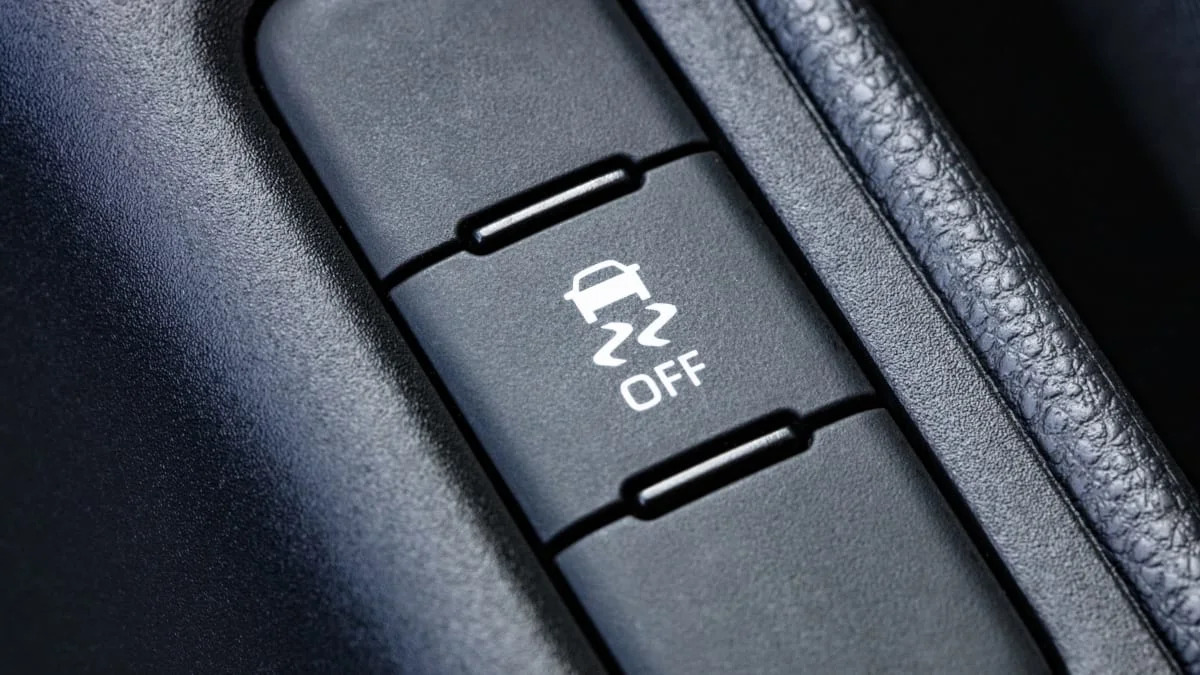Traction control has been a required feature on all new cars sold in the U.S. since 2012, likewise antilock brakes and stability control -- though the feature predated the government requirement by decades. Still, many car buyers may be unsure with what exactly traction control does and how it works. Traction control, in short, is an electronic monitoring system that senses if a wheel (or wheels) is spinning faster than it should and reduces power to regain grip.
Traction control systems can go by many different specific brand names — automakers have their own distinctive names for it. But whatever you call it, it operates in a similar fashion. Each wheel has a speed sensor that relays that information to the main computer. Under normal conditions, all wheels are spinning at the same speed. Under low-grip situations such as rain, snow, and gravel, it's common for one or more wheels to lose traction and spin faster. In an instant, the computer identifies which wheel needs to be slowed and either cuts power or applies some braking.
In the early days of traction control systems, the power coming from the engine was cut or reduced to all wheels, resulting in rather inelegant lurches. As the technology evolved, the power cut was less jarring, and control over individual wheels became more common. Nowadays, most drivers won't even notice when traction control kicks into action.
What does a traction control system do?
There are several adaptations of a traction control system. In off-road applications, it ensures that you'll get the maximum amount of traction and power when ascending steep climbs. Hill descent control is somewhat related, and in most cases applies the brakes to an individual wheel to regain control. Some vehicles offer specific traction control system tunings for different road conditions, too, in the form of driving modes.
In performance cars, traction control systems can help drivers shorten their lap times as they can begin applying power earlier coming out of a curve. In drag racing, the system is often referred to as launch control and distributes the optimal amount of power for the conditions. Traction control is banned in most professional motorsports as it represents an unfair advantage over driver skill.
Should you ever turn traction control off?
Traction control is typically always active, but in some circumstances, you may want to disable it. In low-traction situations, it may be advantageous to spin the wheels in order to dig down to a harder surface or to simply power out of whatever you're stuck in. In most vehicles, this can be done by tapping the traction control button, which is often represented by a rearview pictogram of a car with squiggly lines trailing off the tires. Sometimes it only takes one press, but some vehicles require a long press of a few seconds, so be sure to consult your owner's manual.
What is stability control?
Traction control is related to but not as sophisticated as stability control. Stability control includes traction control data and augments it with speed, steering angle, and other systems to ensure the vehicle stays on its intended path. According to the National Highway Traffic Safety Administration (NHTSA), in the first five years after requiring traction and stability control, approximately 7,000 lives were saved as a result.
That leaves no doubt as to traction control's efficacy and contribution to road safety. For even more proof, there are countless fail videos of drivers leaving their cars and coffee events with the feature disabled, resulting in some embarrassing wrecks into curbs. Traction control isn't perfect, of course, and it can't keep you safe in all situations, but the added assurance is most certainly an advantage.



Sign in to post
Please sign in to leave a comment.
Continue